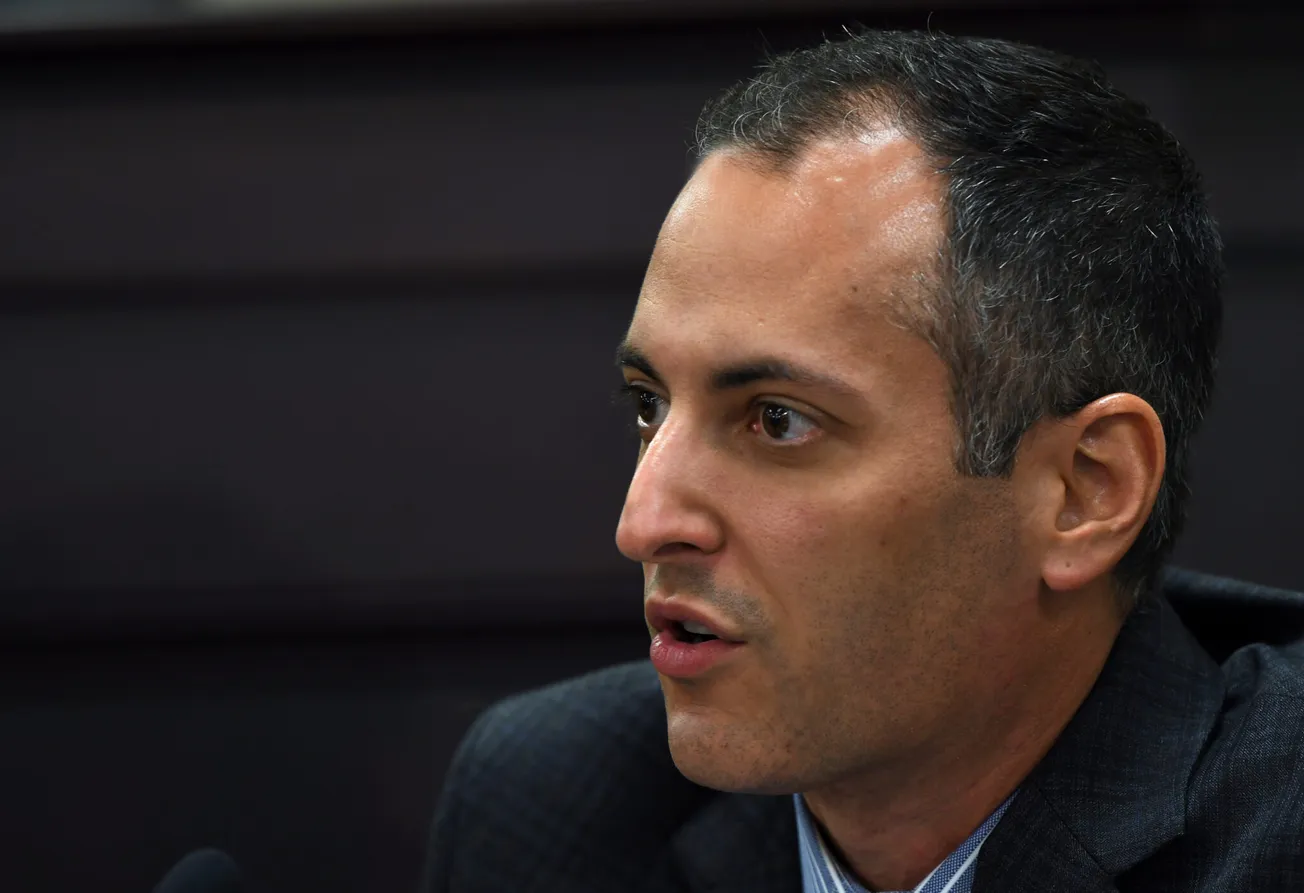As Russian President Putin tries his version of Hitler’s September 1939 “defensive” attack on Poland, we’ve reached the apex, the hinge, of American history’s Fourth Great Turning. And, for the most part, everybody sees it.
Americans who were preoccupied with false claims of voter fraud and the “tyranny” of having to wear a mask or get vaccinated are seeing in Russia and Hungary what actual tyranny looks like.
Putin has miscalculated terribly. His entire career has been, much like Donald Trump’s, one of pushing moral and legal boundaries while getting off scot-free or even being celebrated for his “victories.”
And, like Donald Trump’s incitement of the January 6th violence made him unelectable in America, this error on Putin’s or his advisors’ part could threaten his hold on his own presidency.
When he leveled cities like Aleppo in Syria and Grozny in Chechnya, an orgy of blood and slaughter, nobody seemed much to notice except for the resulting explosion of Syrian refugees in southern Europe.
But Ukraine has become the George Floyd of the world. Smartphones are everywhere, and what’s being referred to as “the world’s first Tik Tok war” are, like Floyd’s murder at the hands of authoritarian cops, showing up on tiny screens, international newscasts, and in living rooms across the world.
War, at least in countries with a large enough middle class to have both numerous smartphones and good Wi-Fi/cell infrastructure, will never be the same. Neither will President Putin: this is most likely the beginning of the end of his political career.
Whether he’ll step down and hand the reins to a trusted subordinate, face an internal coup from his own military like Trump almost did, or find a face-saving resolution to the Ukrainian war and then fade into obscurity is unknowable at this moment.
But make no mistake: both America, Russia, and the world have changed, and the power of autocrats like Russia’s Putin and Belarus’ Lukashenko will never be the same.
Three times in the lifespan of America — each roughly eighty years apart* — the history of the world has turned on an event in which we played a pivotal role. This fourth era, dominated by the personalities of Trump and Putin and now pivoting on the presidency of Joe Biden, will be remembered as the Fourth Great Turning.
The First Great Turning was the American Revolution, kicked off by the Boston Tea Party when patriots protested a billion-dollar (in today’s money) tax cut and tax refund Great Britain gave to the East India Company so they could lowball the price of their wholesale tea and wipe out smaller American competitors.
It was the modern world‘s first great experiment with democracy in a republic.
At the time there were no functional democracies in the world and hadn’t been for almost three thousand years; within two decades the French had executed their king and democratic movements were well established across Europe.
The Second Great Turning, about 80 years later, was the American Civil War. The southern states, in order to preserve and enforce the enslavement of millions of human beings, had completely rejected democracy and turned what we call the Confederacy into an oligarchic police state.
Elections had become shams, a few thousand rich masters of the largest plantations owned the entire political systems of each Southern state, and even white dissenters faced imprisonment, torture, and death.
By the late 1830s there was no longer a free press in any of the Southern states: the transformation into an autocratic police state was complete, as I lay out in detail in The Hidden History of American Oligarchy. Dissent had been almost completely crushed.
Thus, the Civil War was the world’s second turning-point to determine the survival of democracy in America and, by extension, across the rest of the planet.
After the morbidly rich oligarchs of the south declared war on the still vital democracy of the north, the handful of republics around the world that were trying out democracy held their collective breaths and watched with horror for four long years until democracy finally triumphed.
The year the Civil War started, 1861, British philosopher John Stuart Mill published a how-to manual for parliamentary democracies in his Considerations On Representative Government; all but 7 of the world’s democracies today use variations on his proportional representation parliamentary system, which allows for vibrant multiparty systems.
Within a half-century of American democracy surviving the assault of the Confederacy’s oligarchs, the world was filled with new and thriving democratic republics, most using Mill’s model.
The Third Great Turning, roughly 80 years later, was The Republican Great Depression and World War II, when fascism — described in The American Heritage Dictionary as “A system of government that exercises a dictatorship of the extreme right, typically through the merging of state and business leadership, together with belligerent nationalism” — rose its ugly head and challenged the democratic world order, nearly taking down all of Europe.
The American-led destruction of German and Italian fascism signaled a new world order rooted in elected governments, a free press open to the world, and the creation of the United Nations.
America herself became more democratic as an outcome of our brush with racist fascism. The GI bill educated a generation and, with widespread unionization, built the first truly strong and vibrant middle class in the history of the world.
That prosperity brought along with it a turn toward progressivism, rising to America’s motto E pluribus unum (“Out of many, One”). Progressive movements had significant victories with the Civil Rights and Voting Rights acts of the 1960s, laws protecting the environment and working people, and a widespread end to many of the sneaky strategies used mostly in the South to disenfranchise Black voters as well as college students and Social Security voters.
The Fourth Great Turning was arguably kicked off 80 years after the end of WWII by Donald Trump’s ascension to the US presidency and his rapid realignment of US foreign policy away from Europe, NATO and other democratic republics and toward oligarchies like Russia, Saudi Arabia and North Korea.
He pulled us out of “free world” programs like the Paris Accords, UNESCO, the UN Human Rights Council, the TPP, and the Iranian nuclear deal.
David Cay Johnston and other historians have documented how Trump was repeatedly saved financially throughout his career by oligarchs from Russia and other former Soviet states. Trump’s campaign was first run by former Russian-aligned operative Paul Manafort with help from Manafort’s business partner and Nixon protégé Roger Stone, both of whom he pardoned for their crimes on his behalf (along with professional con-man and career criminal Charles Kushner) on his way out of the White House.
When Trump publicly asked Russia for help in the campaign, specifically to hack the DNC and reveal Hillary Clinton’s personal emails (lots of recipes and personal notes to old friends, it turned out), Russia’s intelligence services complied, according to the Mueller investigation. A dozen Russian intelligence operatives were singled out in Mueller’s report for prosecution for their helping Trump become president.
The Trump and Brexit campaigns, both with Russian affiliations, were among the earliest to exploit the weaknesses in Facebook and other social media’s algorithms that could be used to outrage and mobilize large numbers of people with naked lies. These foreign successes in helping elect Donald Trump and pass Brexit, both designed to weaken the European Union and cripple NATO, are legendary, as I documented in The Hidden History of Big Brother.
But now it’s all exposed. Putin’s brutality has mobilized the world to the defense of a small democracy standing against the military barbarity of the unaccountable leader of a major world power.
At least among developed nations, it’s unlikely there will be a repeat anytime soon of this sort of unwarranted violence. Putin is politically done for. Even if he radically escalates and ends up destroying Ukraine or trying to go after Moldova, he’s done.
His “fan boy” Donald Trump also lies exposed to the world; Americans see Trump now as a broke con artist, a shill for oligarchs, and a pathetic wannabee dictator.
His fan club is reduced to conspiracy nuts, “low information voters,” and historically malinformed men who think if they can just stockpile enough big guns they can take on the FBI and the National Guard. They get frantic just thinking about the terror of having to wear a mask to protect people who might be immune compromised or elderly.
But even if many of Trump’s followers are buffoons, this is a serious moment filled with crisis and danger.
Just like each of the previous three Great Turnings in American history, this transition will be rocky and painful. It will cost Ukraine and Russia (and maybe us and more if the conflict spreads) both money and blood. It will be massively disruptive to the world economy and our own domestic politics.
But when the dust settles, it will also have awakened somnambulant Americans to the danger of politicians and a Supreme Court that has so rigged the rules of domestic politics that many of our representatives are no longer accountable to their citizens.
Americans are beginning to once again understand, as Teddy and Franklin Roosevelt both warned us, that oligarchs owning politicians and poisoning the channels of public discourse weakens and can ultimately kill a democracy.
These hinge points of history are never painless, but they always leave enlightenment and true change in their wake.
Once again, America must choose between a strongman neofascist oligarchy or a return to democracy and a republic. Once again, the world watches in horrid fascination as the agents of obscene wealth and police-state brutality struggle to tear apart our democracy.
Barring disaster, this Fourth Great Turning will turn out like the previous three and produce a better world for all. It’s small comfort as we watch defenseless men, women, and children being slaughtered by Russian troops live on television, but history tells us these turnings are very, very real and their consequences echo for generations.
--30--
Written by Thom Hartmann. Cross-posted with permission from The Hartmann Report.
Addendum by Thom Hartmann
A great book on this topic, if you want to do a deep dive into these 80-year cycles of American history, is Strauss and Howe’s The Fourth Turning: An American Prophecy - What the Cycles of History Tell Us About America's Next Rendezvous with Destiny. The book was published 25 years ago, but predicts this very moment with eerie prescience.
Also, Peter Turchin has written several fascinating, although dry, books about the 40-year cycles that seem to appear within democratic nations.
His argument, in a nutshell, is that the pendulum swings to one side until it reaches, in its application, the limits of what then-contemporary society is willing to accept from that side‘s philosophy. Typically, he suggests, that takes about two generations or 40 years.
Then begins a swing back to the other side until a similar limit is reached. Rinse, wash, repeat. So FDR‘s swing to the left finally reached the point where, in the 1960/70s, it became so inclusive of racial and gender minorities that it produced enough of a backlash to give birth to Reagan’s swing to the right. Reagan’s swing to the right, in turn, has now hit the fascist extremes that characterize the far right, including misogyny, racism, anti-Semitism, and distrust of democracy itself. Thus has begun the swing back to the left I wrote about above.
On the 80 year cycles, Strauss and Howe’s work begins with a quote from Arnold Toynbee that, as far as I can tell, is apocryphal but nonetheless widely repeated: “When the last man who remembers the horrors of the last great war dies, the next great war becomes inevitable.” A human lifespan is roughly 80 years.
If, for example, when Phil Graham took the floor of the Senate in 1999 and argued that we should do away with Glass-Steagall because it had been so successful it had prevented any banking crashes since the 1930s and was therefore no longer necessary, if anybody in that 1999 Senate had been an adult in the 1930s and actually remembered that time they would’ve laughed him off the floor.
But there was literally nobody there who had an actual memory of the time, and Americans, if we are uniquely bad about anything, it’s remembering and understanding the contemporary applications of history’s lessons.







